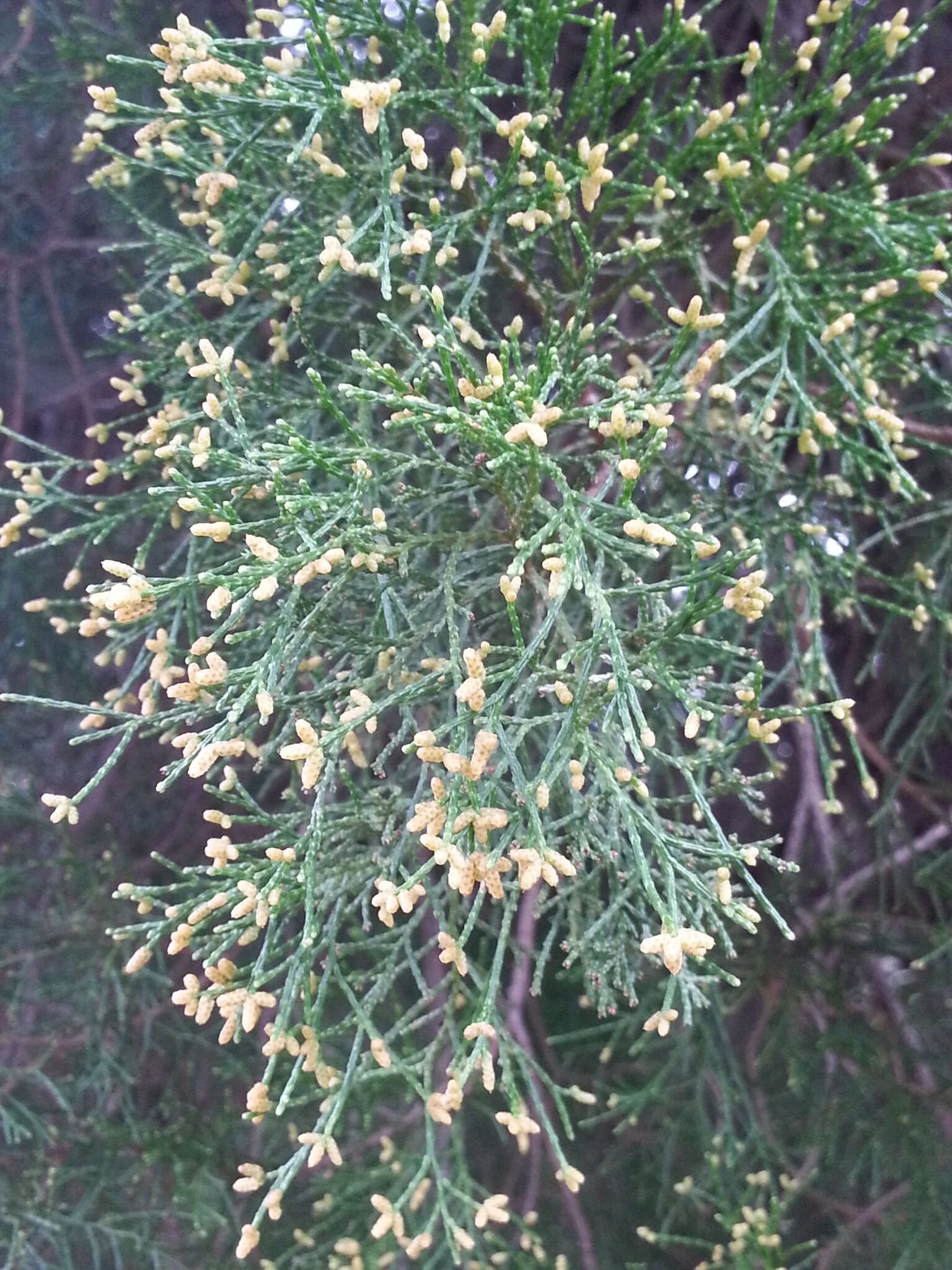
A columnar tree to about 20 m tall. Bark furrowed, grey-brown. Branches spreading or ascending. Foliage dark green, rarely bluish. Leaves rounded on the back. Female cones solitary, ovoid or slightly compressed, 1-2 cm wide; scales 6, thin, the smaller ones half to three-quarters the size of the larger, smooth and separating almost to the base.
The concept of this species has changed in recent years and now applies only to coastal plants of sandy soils from northern NSW and Queensland, with mostly dense, dark green foliage. The more widespread inland species once listed under C. columellaris is now named C. glaucophylla.
NT, Qld, NSW.
Timber used for building and valued for being termite-resistant, once used for Aboriginal implements.
Foliage dense, dark green; cones solitary.
Thompson & Johnson (1986).
VIC: Burnley (V.C.A.H., 11 m in 1989, ptd. c. 1930); Dandenongs (Hamer Arboretum, ptd 1974); Footscray (Park); Melbourne (Royal Bot. Gds, Lower Hopetoun Lawn probably ptd in Mueller's directorship and already a fine specimen at the end of the nineteenth century - see illustration in Guilfoyle's Australian Plants, probably Victoria's finest specimen). NSW: Sydney (Royal Bot. Gds; N Parramatta, Cumberland Hospital 1 tree in Wisteria Garden c. 25 m tall; Rozelle, Rozelle Hospital, 10 trees in Japanese Garden about 25 m tall; Gladesville, Gladesville Hospital, c. 25 trees on the south side outside pottery c. 25 m tall, on the north side a commemorative tree to Sidney V. (Tom) Clements 6.8.41, a fine specimen c. 35 m tall). ACT: Australian National Bot. Gds
Source: (1995). Cupressaceae. In: . Horticultural Flora of South-eastern Australia. Volume 1, Ferns, conifers & their allies. The identification of garden and cultivated plants. University of New South Wales Press.
